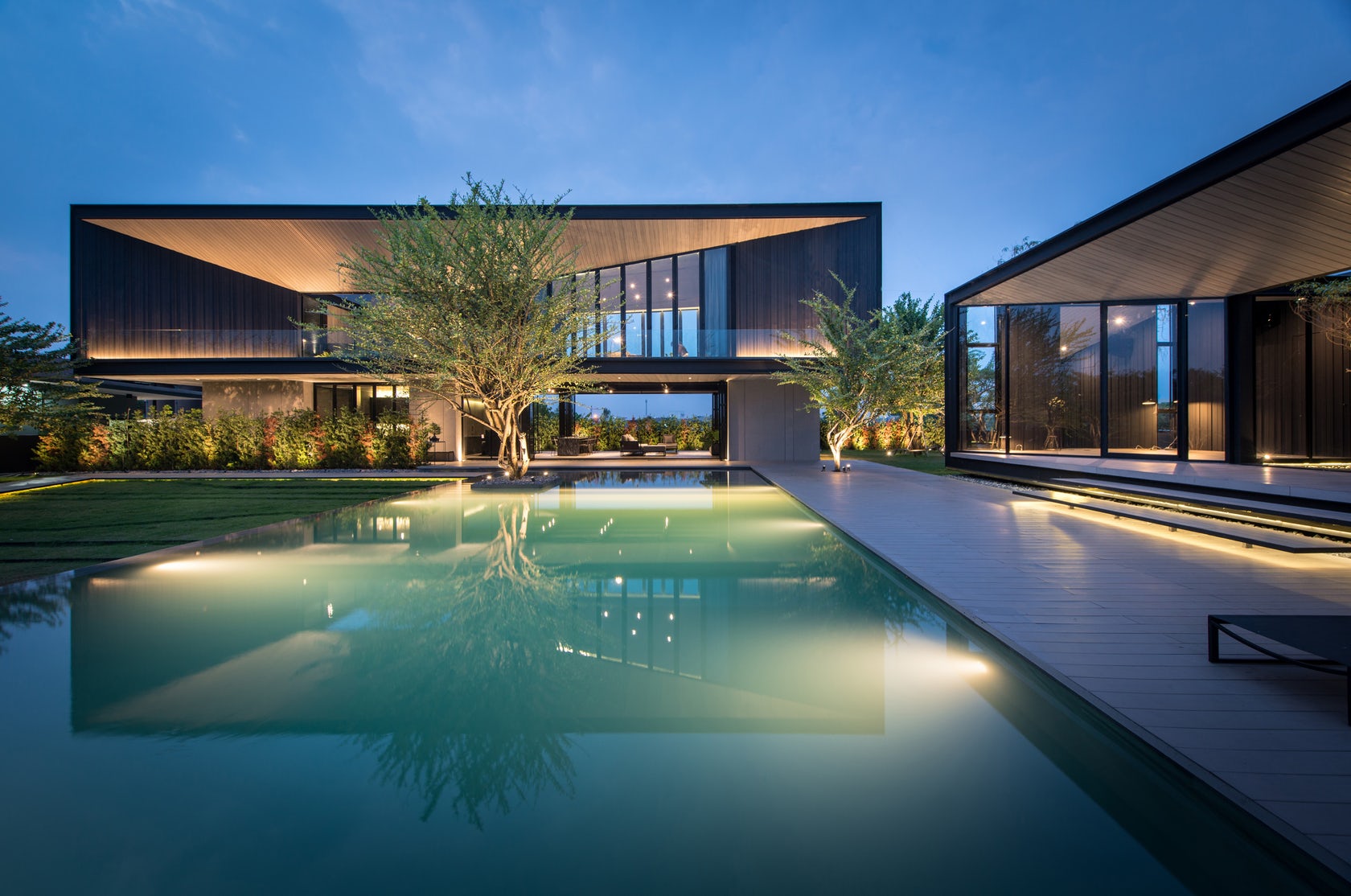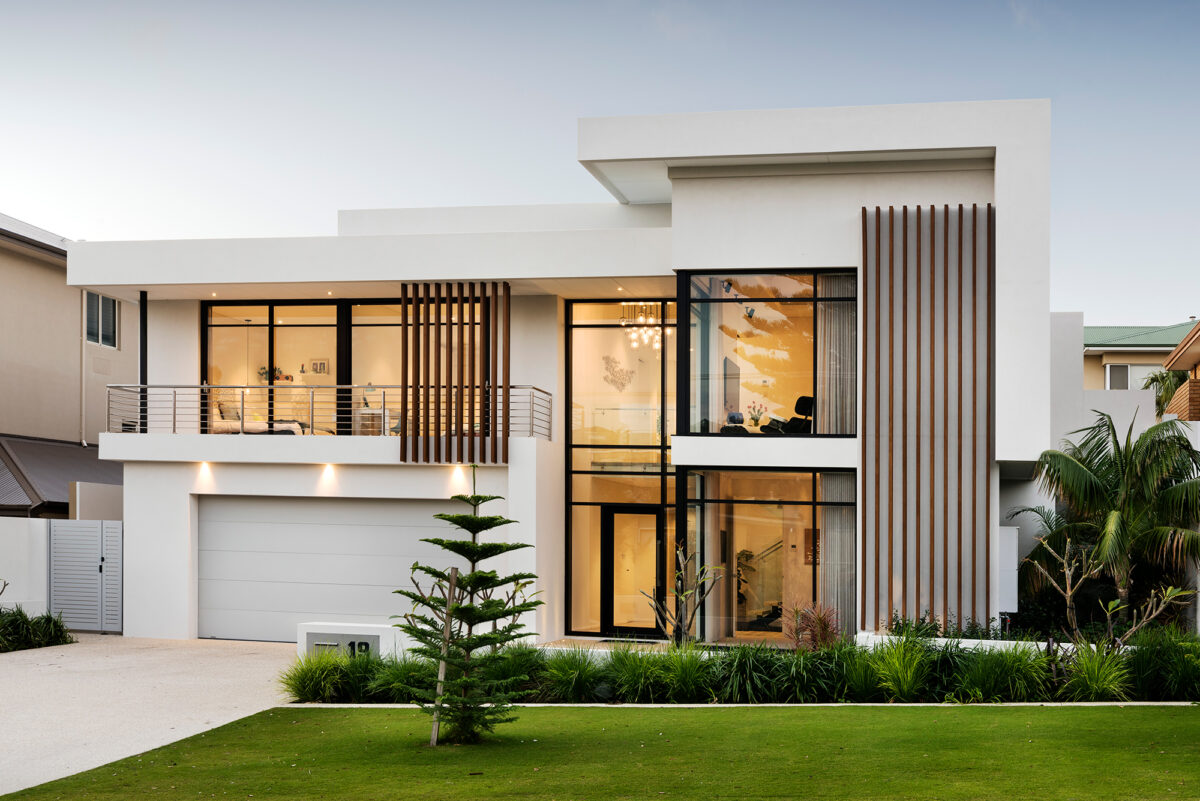Discover the Most Recent Patterns in Modern Home Design for Your Next Project
In today's developing architectural landscape, modern-day home design patterns are increasingly prioritizing functionality and sustainability. The assimilation of open flooring plans fosters both connection and a wealth of natural light, while the use of lasting materials shows a growing dedication to green practices. Improvements in smart home modern technology are improving how we connect with our living spaces. As we discover these aspects, it becomes evident that the future of home design is not practically appearances, however also concerning developing adaptable atmospheres that enhance our every day lives. What might this mean for your next project?
Open Flooring Plans
Open flooring plans are increasingly popular in modern home design, as they promote a sense of spaciousness and connection among living locations - melbourne home residential projects. This architectural pattern gets rid of typical barriers, such as walls and doors, that often different kitchen areas, dining spaces, and living spaces. By incorporating these locations, house owners can take pleasure in a more cohesive setting that urges communication and flexibility
Among the primary benefits of open layout is their ability to improve natural light throughout the home. With less walls obstructing light flow, rooms feel brighter and much more welcoming, producing a happy atmosphere. Furthermore, this format permits much easier motion and socialization, making it excellent for family members and enjoyable guests.
Additionally, open flooring strategies can use higher style convenience, making it possible for house owners to curate their areas with an extra unified visual. The seamless transition between locations enables for creative decor options and furnishings arrangements that can adjust to different requirements.
While open flooring strategies have several advantages, it is vital to think about prospective obstacles, such as noise control and privacy. When thoughtfully designed, open floor strategies proceed to be a trademark of modern-day home design, reflecting modern way of livings.
Lasting Materials
In recent times, the use of lasting products in home architecture has actually gotten considerable focus as house owners look for to reduce their ecological influence. This fad mirrors an expanding understanding of the ecological results of standard building materials and a desire for greener choices.
Lasting products include a broad range of alternatives, including reclaimed wood, recycled metal, bamboo, and low-VOC (volatile organic compounds) paints. Redeemed timber, for instance, not just lessens logging however also adds character to a home with its special background. Bamboo, understood for its fast development, offers an eco-friendly alternative that is both long lasting and aesthetically pleasing.
Integrating sustainable products right into home layout also boosts power efficiency. Insulation made from recycled materials, for instance, can significantly lower energy consumption for cooling and heating, causing lower utility bills. In addition, many lasting products are sourced in your area, additional reducing the carbon impact connected with transport.
As the need useful source for environmentally liable construction grows, architects and home builders are progressively prioritizing lasting materials. This shift not only profits the atmosphere yet likewise produces much healthier home for property owners, straightening contemporary design with a lasting future.
Smart Home Modern Technology
The assimilation of smart home innovation has become a prominent trend in contemporary style, matching making use of sustainable materials. melbourne home residential projects. This technological improvement improves the functionality and effectiveness of property rooms, giving property owners with unmatched control over their living environments
Smart home systems enable customers to handle lighting, climate, security, and amusement with centralized applications or voice commands. These attributes not only improve comfort yet additionally promote energy preservation by enhancing resource usage. For instance, smart thermostats can learn user choices and readjust heating or cooling as necessary, significantly minimizing power usage.
In addition, advances in home automation assist in increased safety and security with clever locks, electronic cameras, and security system, which can be kept an eye on from another location. This assimilation enhances satisfaction for property useful content owners while supplying added convenience.
Incorporating smart innovation into home style likewise influences architectural aesthetics. Designers are now creating spaces that effortlessly incorporate innovation, making sure that tools are both useful and visually enticing. Therefore, modern-day homes symbolize a harmonious balance between innovative modern technology and thoughtful style, making wise home innovation an essential consideration for any future building task.
Biophilic Style
Exactly how can design enhance our connection to nature? Biophilic design acts as an engaging solution to this question, incorporating natural aspects into developed settings to cultivate a much deeper bond in between passengers and the surrounding community. This design philosophy focuses on the use of organic products, natural light, and vegetation, creating rooms that promote well-being and boost the lifestyle.
Integrating features such as huge windows, living wall surfaces, and indoor yards can dramatically enhance air quality and give a sense of peace. The calculated placement of these components enables unhampered views of nature, removing the barriers in between indoor and outside rooms. In addition, the usage of natural products like timber, stone, and water not just reflects the environment yet likewise stimulates a sensory experience that Look At This resonates with human impulses.
Biophilic layout also highlights the importance of biodiversity, motivating making use of native plants and lasting landscaping practices. By embracing this technique, architects can produce homes that not just value the natural globe yet also improve the emotional and emotional wellness of their inhabitants. Embracing biophilic concepts in modern-day architecture is a crucial action toward a more harmonious conjunction with nature.
Flexible Spaces

Crucial element of flexible spaces consist of movable dividings, modular furnishings, and cutting-edge storage space solutions that enhance usability. These functions permit citizens to tailor their settings according to their preferences, fostering a sense of possession and customization. Integrating technology, such as clever home systems, can better promote this versatility by enabling customers to manage lights, climate, and multimedia experiences with ease.

Conclusion
Integrating the newest patterns in modern-day home architecture can dramatically enhance the living experience. The combination of smart home technology boosts efficiency and protection, and biophilic design establishes an essential connection to nature.